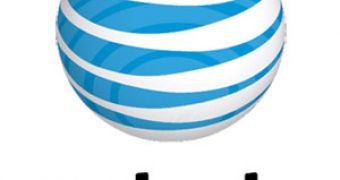Wireless carrier AT&T announced today that it planned on deploying High Speed Packet Access (HSPA) 7.2 technology to six major cities in the United States before the end of the ongoing year, as part of its plan to provide better speeds to its subscribers in the country. According to the company, the roll-out is set to offer it the possibility to meet the growing demand for mobile data traffic.
The deployment of HSPA 7.2 in six major cities, including Charlotte, Chicago, Dallas, Houston, Los Angeles and Miami, is only the initial phase of AT&T's work on improving the capacity of its network. The carrier also announced that 25 of the countries 30 largest cities should see HSPA 7.2 before the end of 2010, and that it planned on rolling out HSPA 7.2 on around 90 percent of its existing 3G network footprint before the end of 2011.
“Our deployment of HSPA 7.2 and supporting backhaul connectivity will enable our customers to continue to ride the leading edge of emerging devices and thousands of mobile applications,” said John Stankey, president and CEO, AT&T Operations. “Our network is based on the predominant technology platform used by operators worldwide and has been tested by today’s most popular devices. That experience gives us an important advantage in developing and deploying new technologies to meet customers’ future needs.”
The network upgrade is expected to enable the operator to offer theoretical peak speeds of 7.2Mbps, though it admits that the real speeds will vary according to a wide variety of factors, “including location, device, and overall traffic on the local wireless network at a given time.” Along with an enhance network, AT&T's users will also enjoy a series of six new smartphones before the end of 2009, along with two new LaptopConnect cards.
According to AT&T, additional wireless backhaul will support the roll-out of HSPA 7.2 in each new market. At the same time, the carrier also states that the backhaul capacity is meant to offer support for the 4G LTE technology, which the carrier plans on trialing next year and rolling-out in 2011. “Even as we look forward to LTE, we know that 3G will be the predominant mobile broadband network technology worldwide for smartphones for the next few years. AT&T’s strategy will deliver faster 3G speeds, while also allowing us to build the foundation for the 4G future,” Stankey added.

 14 DAY TRIAL //
14 DAY TRIAL //